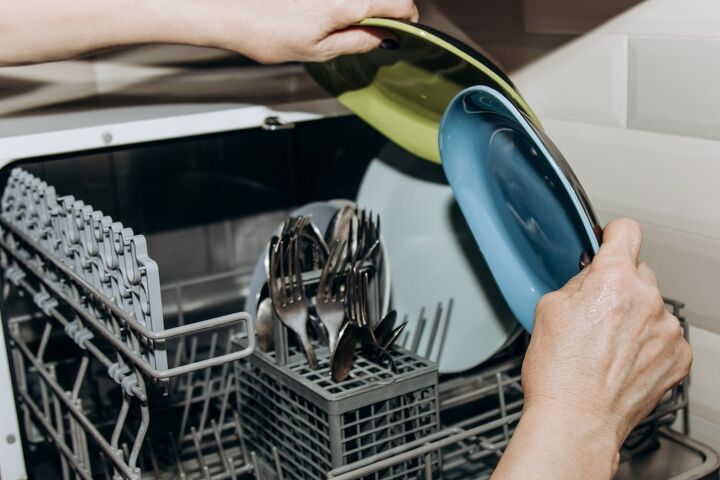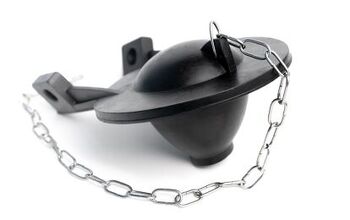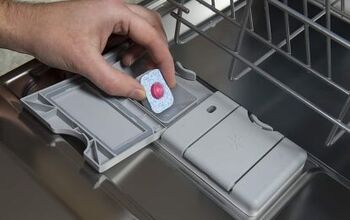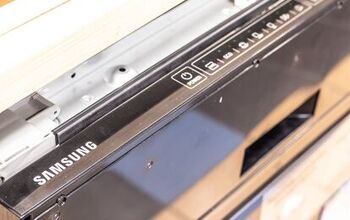Dishwasher Chopper Keeps Getting Clogged? (We Have A Fix)

You may notice that after a few years, your dishwasher struggles to get everything clean. What you may not realize is that certain components can and will wear down over time. When they wear down, they become less efficient and effective.
The chopper is one such component. It is meant to reduce any debris and food scraps to tiny chunks so that they can pass through the screen. When food collects in the chopper, the most likely reason is that the chopper has been damaged or broken. When that happens, you will either have to clean out the clog or replace the chopper if a component is broken.
Do You Need Appliance Repair Services?
Get free, zero-commitment quotes from pro contractors near you.

What Does the Chopper Do?
There is a pretty good chance that you may not have even noticed the chopper before. It is a relatively small component and can be easy to miss if you aren’t paying attention. It does, however, play an important role within your dishwasher.
When you don’t fully rinse the dishes, there are food scraps that can get tossed around the dishwasher. The chopper works to dice those items up into small enough particles that they can drain away. When it can’t manage the larger pieces (or breaks), you will begin to notice clogs. The clogs can form either in the drain line or in the sink itself.
How Do You Remove a Chopper Blade?
If your dishwasher’s chopper keeps getting clogged up, there are two likely solutions. The most likely is that one of the blades has become damaged or broken. But you may just be doing a poor job of clearing off debris and food scraps, leaving the chopper with more than it can handle.
Thankfully, you can pop out the chopper blade to give it a closer look. In some cases, you may simply be able to take the chopper blade out and clean it. In a worst-case scenario, you are looking at replacing the blade entirely.
How to Remove the Chopper Blade
Using this step-by-step guide, you can take out the chopper blade and give it a closer look. Here’s how:
Step 1: Disconnect the power
Make sure that you cut off the power to the unit. Simply unplugging it is enough. With the power off, open up the door and pull out both the upper and lower dish racks. Make certain that you snap the caps off of the end of the upper rack in order to remove it. Set both of the racks aside.
Step 2: Spray arm
Turn the lower arm’s retaining nut to loosen it. Take the nut out and lift the spray arm out, exposing the arm bearing of the lower spray arm.
Step 3: Spring clips
Take a close look around for spring clips on either side of the spray tower. These are attached to the washtub’s back wall. Use your fingers to press the clips in and release the tower. Turn the tower clockwise so as to disengage it and release the bearing for the lower spray arm. You should now be able to lift out the spray arm bearing located at the center of the tub.
Step 3: Remove the screws
Using a Torx-head screwdriver, take out the screws from the housing and pump cover. Lift out both and you should see the exposed chopper assembly cover. There should be one screw holding the assembly cover to the bottom of your dishwasher. You can use needle-nose pliers to lift the cover. Remove the screw beneath.
Step 4: Release the cover
Using a small flat-head screwdriver, pry the clip at the side of the cover to fully release the cover. You may need to use your pliers to help pull the cover completely from the blade. Pull out the old blade.
A Broken Chopper
In some instances, you may find that the chopper assembly is just overly clogged with food scraps and debris. Give the assembly a thorough cleaning and then return it to its place in the dishwasher. Test it out to see if that does the trick.
Sometimes, though, you are dealing with a damaged or broken chopper. The chopper itself has four prongs on the back portion of the assembly. Sometimes, the prongs can break off, leading the screen to get clogged far quicker.
If you notice any damaged or missing prongs, you have to replace the chopper. There is also the possibility that the piece that catches onto the prongs isn’t properly seated. Check that connection if you don’t notice immediate damage to the chopper itself.
How Do I Clean a Chopper?
Once you know how to remove the chopper from the assembly, you can do pretty much anything that you need to. The worst-case scenario is that one of the blades has broken. As mentioned above, there is a chance that the screen has simply become clogged and needs cleaning. Here’s how you do it.
Step 1. Different styles
First and foremost, be aware that there are different styles of chopper out there. For the most part, you can dismantle the assembly by sliding the bottom plate off and then spreading the panel. Unscrew the top and you should be able to remove the chopper blade.
Step 2: Rinse
Start with a good rinse. A strong rinse should clear out any of the larger food particles with relative ease. If you have food that has become stuck on and stubborn, then you will want to get in there with a brush. Scrub with a soft-bristled brush to remove any tough, caked-on food times.
Step 3: Wash by hand
It is important to note that you want to wash the chopper by hand. In the dishwasher, the chopper could move around, getting damaged during cleaning. In most cases, the chopper is made of plastic, leaving it more susceptible to damage as well. Use warm, soapy water and wash by hand.
Step 4: Re-install
When you are confident that the chopper is as clean as it gets, it is time to re-install. Work through the steps laid out above in reverse, re-installing the chopper in its rightful place. When everything has been properly secured in place, give it a test run on the regular cycle. The dishwasher should go back to providing a thorough clean. If it doesn’t, then you have other potential issues to troubleshoot.
Do You Need Appliance Repair Services?
Get free, zero-commitment quotes from pro contractors near you.

How Do You Fix a Dishwasher That Does Not Clean?
When you notice that glasses have streaks or plates and silverware have smears, it is evident that your dishwasher is not doing its duty. The good news is that there are plenty of fixes available to you without having to bring in a repairman.
Here are some of the most common fixes available to you depending on the dishwasher model.
Use Vinegar
More often than not, when your dishwasher is cleaning but not doing so quite as well as it should, there is a buildup of gunk and grime. This is completely normal and is caused by hard water and food deposits.
Thankfully, a little vinegar will do the trip. Empty out your dishwasher and pour 3 cups of white vinegar into the bottom of your empty dishwasher. Set it to the longest cycle and run your “vinegar cycle.”
The vinegar works to break down and dissolve any light mineral buildup and will clean the gunk out of the spray-arm holes. Moreover, vinegar is great for taking grease off of the walls of the dishwasher. Not only will dishes be cleaner, but they should smell better.
Check the Spray Arms
Over time, the holes in the spray arm can become clogged with dirt and food scraps. The good news is that you can clean them manually to get them working normally once again.
It takes some work to get to the spray arm at the bottom of your dishwasher. When you get to tit, you can use a toothpick to clear out the holes. When you have cleared out the clogs, simply rinse the spray arm under some hot water. Test out your change to see if it has a positive impact on your dishwasher cycles.
Raise the Water Temperature
A great, natural way to dissolve those built-up food particles is by using extra hot water. Depending on the dishwasher model that you have, you may be able to simply increase the water temperature. If it doesn’t have a built-in feature, don’t worry. You can change the temperature on the water heater.
Without the built-in feature on your dishwasher, you will have to change the temperature manually. You can change the temperature on the water heater; set it to at least 120 degrees. You can also help your cause by running hot water in the kitchen sink for a minute to ensure that only hot water goes into your dishwasher.
The hot water will work just fine to clear out any buildups of grime and food there may be. Run a full load afterward to check on your results.

Ryan Womeldorf has more than a decade of experience writing. He loves to blog about construction, plumbing, and other home topics. Ryan also loves hockey and a lifelong Buffalo sports fan.
More by Ryan Womeldorf



























